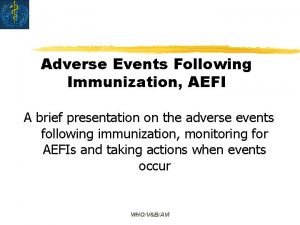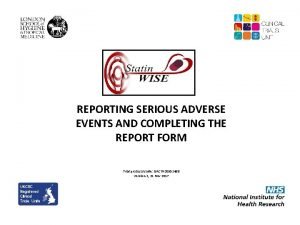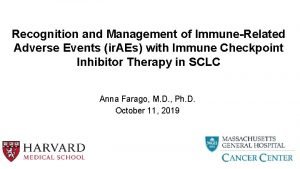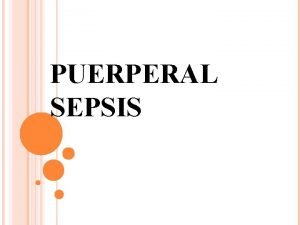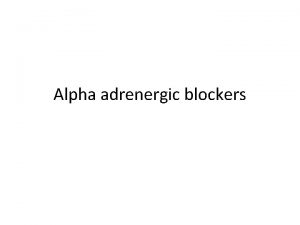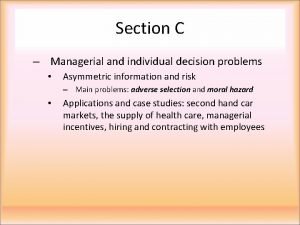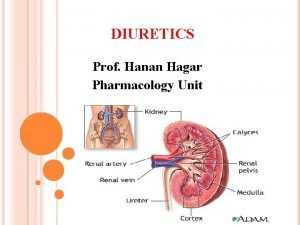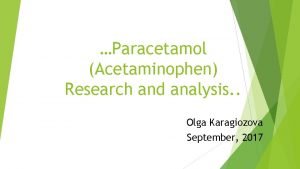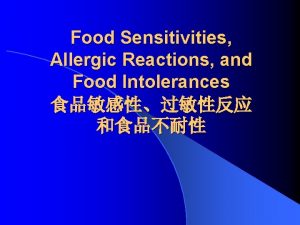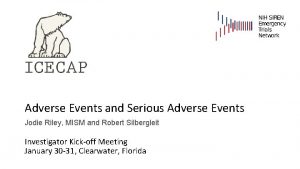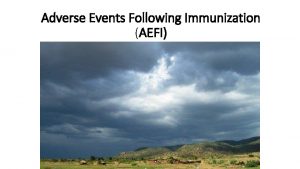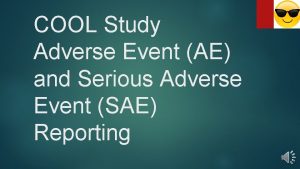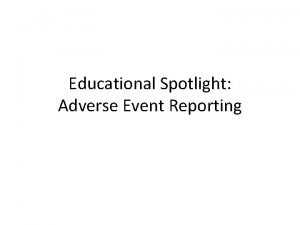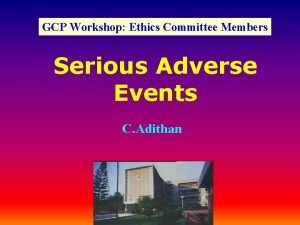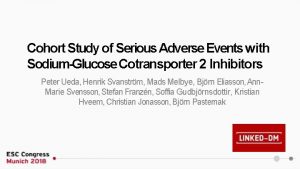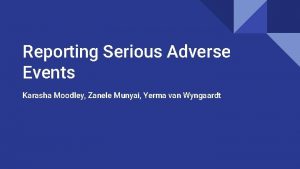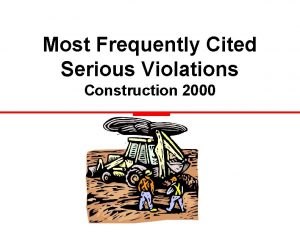WHAT ARE THE MOST SERIOUS ADVERSE EVENTS DURING














- Slides: 14

WHAT ARE THE MOST SERIOUS ADVERSE EVENTS DURING AND AFTER RADIATION THERAPY? Bhadrasain Vikram, MD

GLIOBLASTOMA Stupp, NEJM 352: 987 -96, 2005. • >Grade 3 non-heme toxicity in 31%. Most common: – Fatigue & other constitutional symptoms – Rashes & other skin effects – Infection – Effects on vision – Nausea & Vomiting

HEAD & NECK Bonner, NEJM 354: 567 -78, 2006. • >Grade 3 toxicity: –Mucosal 56% –Dysphagia 26% –Dermatitis 23% –Weight loss 11%

SMALL CELL LUNG - LD Turrisi, NEJM 340: 265 -71, 1999. • >Grade 3 non-heme toxicity: – Esophagitis in 32% – Infection – Fever – Vomiting – Pulmonary effects – Weight loss

ESOPHAGUS Minsky, JCO 20: 1167 -74, 2002. • >Grade 3 acute toxicity in 71%. • >Grade 3 late toxicity in 37%. –Esophageal strictures, perforations, bleeding.

BREAST: POST-LUMPECTOMY Fyles, NEJM 351: 963 -970, 2004. • >Grade 3 toxicity: –Fatigue 1% –Skin erythema 1%

BREAST: POST-MASTECTOMY Ragaz, JNCI 97: 116 -1126, 2005. • >Grade 3 late toxicity @ 20 years: – Cardiac 1% – Arm edema 6% – Symptomatic pneumonitis 0. 6%

PANCREAS: POST-OP Regine, JAMA 299: 1019 -1026, 2008. • >Grade 3 non-heme toxicity in 58%. Most common: – Diarrhea – Stomatitis – Nausea & Vomiting

PROSTATE: LOW-RISK Lawton, IJROBP 67: 39 -47, 2007. • >Grade 3 acute toxicity: – GU bleeding/toxicity 8% • >Grade 3 late toxicity: – Erectile dysfunction 9% – GU obstruction/retention 2%

PROSTATE: HIGH-RISK Bolla, Lancet 360: 103 -108, 2002. • >Grade 3 toxicity: –Erectile dysfunction 68% –GI/GU toxicity 3. 7%

CERVIX Morris, NEJM 340: 1137 -1143, 1999. • >Grade 3 acute non-heme toxicity in 11%. Most common: – Nausea & vomiting – Diarrhea • >Grade 3 late toxicity in 12%. Most common: – Bowel & Urinary toxicity

RECTUM Sauer, NEJM 351: 1731 -1740, 2004. • >Grade 3 non-heme acute toxicity in 27%. Most common: – Diarrhea – Dermatitis • >Grade 3 late toxicity in 14%. Most common: – Diarrhea – Bowel obstruction/strictures – Bladder problems

ANAL Ajani, JAMA 299: 1914 -1921, 2008. • >Grade 3 non-heme acute toxicity in 74%. Most common: – Skin toxicity – Bowel toxicity • >Grade 3 late toxicity in 11%. Most common: – Bowel toxicity – Skin & Subcutaneous

SUMMARY • Serious adverse events frequently occur during and after radiation therapy in many common cancers. • The impact of advanced technologies (IMRT, Protons, etc. ) in that regard has until now been quite modest.
 Mikael ferm
Mikael ferm Serious adverse event reconciliation
Serious adverse event reconciliation Adverse events following immunization (aefi) course answers
Adverse events following immunization (aefi) course answers Adverse events in hospital
Adverse events in hospital Ir adverse event
Ir adverse event Puerperal endometritis
Puerperal endometritis What was the most serious obstacle to german unification?
What was the most serious obstacle to german unification? Mutually exclusive events vs not mutually exclusive events
Mutually exclusive events vs not mutually exclusive events Historical events during the baroque period
Historical events during the baroque period What major events happened during john adams presidency
What major events happened during john adams presidency Alpha blockers
Alpha blockers Adverse selection
Adverse selection Classification of diuretics
Classification of diuretics Mechanism of action of acetaminophen
Mechanism of action of acetaminophen Adverse food reactions
Adverse food reactions


